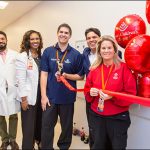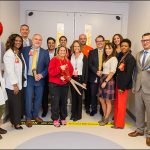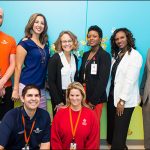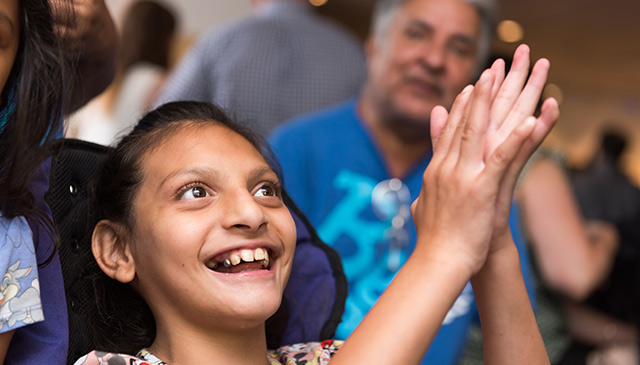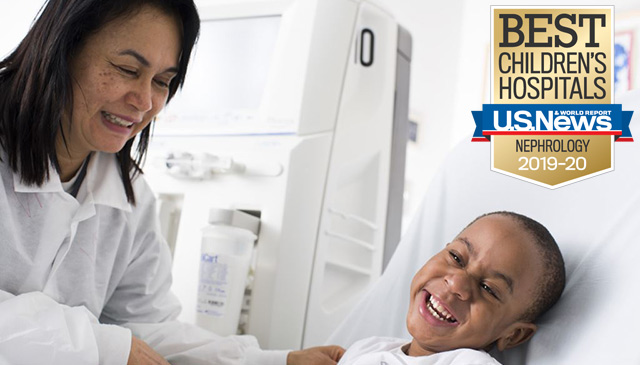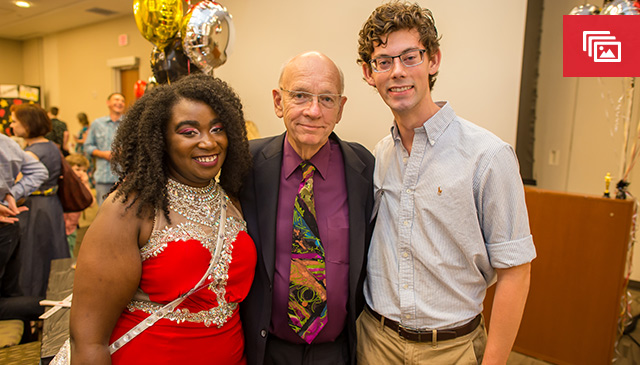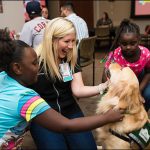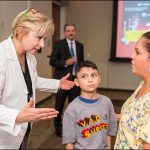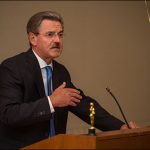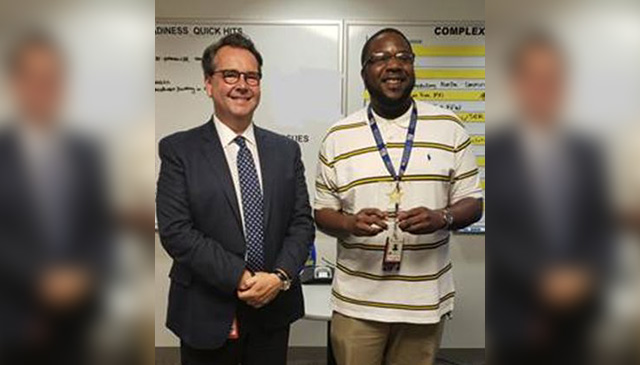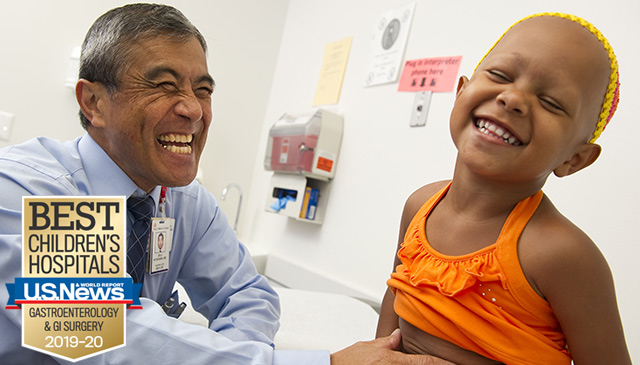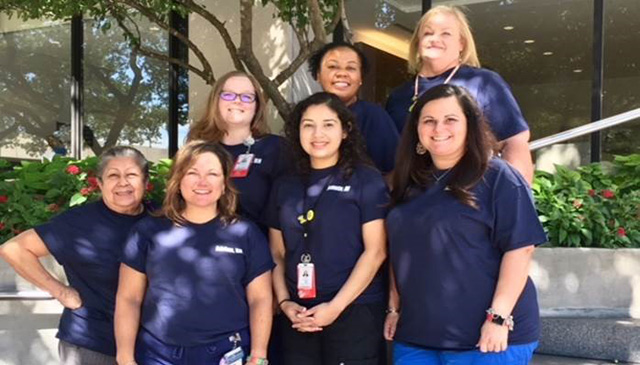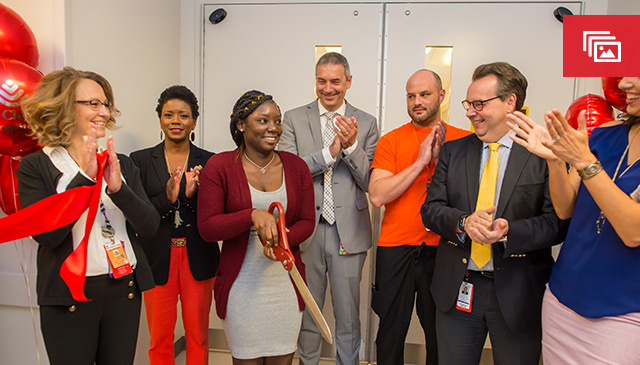
Texas Children’s is known for implementing the latest technology to increase the quality of care for our patients. At an open house, The Woodlands campus recently celebrated the Radiology Department upon receiving two new, hi-tech MRI scanners that will expand the range of exams that are performed.
“We feel that we owe it to our patients to deliver the best possible care and with that it includes getting the best possible diagnoses and having the best possible equipment,” Assistant Director of Radiology Traci Foster said. “We are extremely excited about what this means for The Woodlands campus, and Texas Children’s as a whole.”
The celebration began in the second floor conference room at The Woodlands campus, as members of the radiology department and hospital leaders mingled and enjoyed complimentary breakfast. Foster then opened a small program by welcoming everyone and thanking many others for their part in this accomplishment. Three MRI technologists, Dionne Dowdy, Hollis Marshall, and Mark Caspari, were awarded the Texas Children’s – The Woodlands Radiology Promise award for Quality Improvement for their collective efforts in successfully transitioning the Radiology Department to the new MRI platform.
“I have been here 22 years and I am really excited about receiving these new scanners and the success of the radiology department as a whole,” Dowdy said. “I look forward to working with these machines and expanding the scope for what we can do for our patients.”
The primary benefit of the new scanners are to provide the best possible quality MR imaging, particularly for neurologic imaging of the brain and spine. The implementation of these machines is a part of a cutting edge platform by our vendor partner, Siemens.
“Texas Children’s for years has set standards for pediatric care in Texas and the country,” Vice President of Sales for Siemens Healthcare Matt Hoffman. “We are excited to be working with you all to be a part of providing high-quality care to children.”
The multinational manufacturing company provided the campus with both the 3T Vida scanner and the 1.5T Sola scanner. Both scanners represent the latest technology on their newest platform, and are amongst the first of its kind in any pediatric facility worldwide.
“Texas Children’s has a commitment to the highest quality and the highest safety for patients, and we are extremely proud of being a part of something so groundbreaking in radiology,” Dr. Victor Seghers, Chief of Community Radiology, said. “These new Siemens MRI magnets represent yet another tangible delivery of our CEO Mark Wallace’s promise to The Woodlands community that children will receive the best care, close to home.”
Following the program, everyone proceeded to Radiology on the first floor as seventeen-year-old patient, Ashia Smith cut the ribbon commemorating this momentous event, just before her scheduled MRI exam.
“We have improved our ability to diagnose disease and ultimately treat our patients due to the investment in this new technology,” Seghers added. “Our patients are also reporting improved convenience and satisfaction related to faster imaging time acquisition and the quieter environment in the new MR scanners.”
From an imaging perspective, these new scanners will help ensure that The Woodlands campus can perform all types of MRI exams onsite as opposed to sending patients to the Medical Center campus.
“The future looks terrific. We have a solid partnership with our vendor and a brand new cutting edge platform,” Seghers said, “that can benefit from further improvements and enhancements to both hardware and software over the next 10 years. This is important in light of our clinical and academic/research mission to the patients in The Woodlands and the North Houston metro region.”
Texas Children’s will continue pioneering pediatric radiology technology as we look forward to the arrival of the Kinetic Sensor later this year. This is an integral part and one of the key features of Siemens Healthineers BioMatrix technology and of the new 1.5 Sola and of the 3T Vida systems. It is the first ever in-bore, real-time patient viewing system, allowing close patient monitoring and prospective motion correction for neurological MRI exams, and will be the first in the country.
To learn more about Texas Children’s radiology services, click here.








